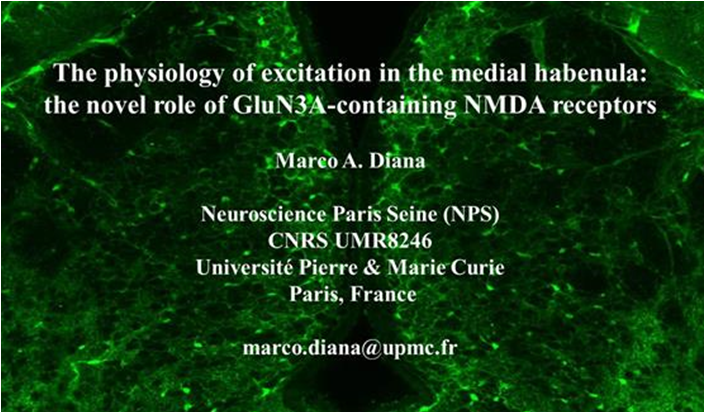Seminario INGEBI
Jueves 22 de Noviembre 13:20 hs.

Much is known about the central role of conventional GluN1/GluN2 subunit-containing NMDA receptors (NMDARs) in glutamatergic synaptic transmission during normal and pathological brain states. However, there exists also a largely underappreciated group of glycine-binding NMDAR subunits, GluN3A and GluN3B, which have been so far uniquely associated with synaptic maturation and plasticity at early developmental stages. During this seminar, I will show that, in contrast to all expectations, GluN3A forms a completely novel type of excitatory glycine-activated receptors in the neurons of a specific region of the adult brain, the epithalamic medial habenula (MHb). The MHb is an important information hub linking the forebrain to neuromodulator-releasing caudal areas, which participates to the expression of physiological responses to stress, anxiety and fearful stimuli, and more generally to the treatment of aversive information. During my talk, I will describe the localization, the properties and the possible functional role of this novel receptor in the MHb. In particular, consistently with the complete
lack of an afferent glycinergic plexus in the MHb, I will identify glial cells as a possible physiological source of the glycine leading to receptor activation. Finally, I will illustrate how the reduction in GluN3A expression levels in the MHb via interference RNA methods disrupts the development of aversive states, thus directly involving this novel receptor type in known MHb-related phenotypes. Overall, our data demonstrate for the first time the functional expression of purely glycine-activated excitatory receptors in adult native neurons and propose a signaling mechanism between glial and neuronal cells potentially controlling aversive states through the medial habenular relay station.
